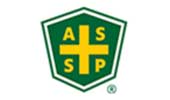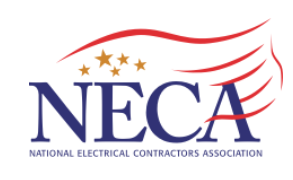Why an Arc Flash Study is Necessary for Your Facility
Author: Doug Black
An Arc Flash Assessment / Analysis is a study of the facility’s power system to determine the incident energy available at specific electrical devices that employees would be exposed to while “interacting with” the electrical equipment at the facility. The output of the Assessment/ Analysis is a determination and labeling of the PPE required of the electrical devices, suitability of the devices for service as installed and if there are any miss- coordination issues involved as the system is currently installed.
A short circuit current available analysis and the clearing times of the overcurrent devices involved is required to determine the incident energy at the various points in the system.
OSHA 1910.132 requires that employers identify and protect their workers from workplace hazards. Every industrial / commercial power system includes inherent risks – specifically electrical shock and arc flash, anytime employees are “interacting with” electrical equipment while energized. Interacting with electrical equipment includes operation of fully enclosed switches and power circuit breakers as well as any exposure to energized equipment or circuit parts, including all energized testing or troubleshooting activities.
NFPA 70E – Standard for Electrical Safety in the Workplace, Section 110.1 – requires “The employer shall implement and document an overall electrical safety program that directs activity appropriate to the risk of electrical hazards. The electrical safety program shall be implemented as part of the employer’s overall occupational health and safety management system, when one exists.” Section specifically includes identifying and quantifying the risks of both shock and arc flash hazards, before work begins.
NFPA 70E, Section 130.5 Arc Flash Analysis – requires an arc flash risk assessment shall be performed to determine the risk, safety related work practices required, the arc flash boundary, the incident energy at the working distance, and the PPE that people within the arc flash boundary shall use. This assessment shall be reviewed at intervals not to exceed 5 years.
NFPA 70E Section 130.5 (H) Labeling – requires all equipment “likely to require examination, adjustment, servicing, or maintenance while energized shall be field marked” … with a label containing arc flash risk identification, severity of the risk, arc flash boundary and required PPE level among other things. This includes any energized testing or troubleshooting activity..
NFPA 70E, Section 110.3 (A) Host Employer Responsibilities – requires that host employers of contractor or outside service personnel are responsible for notifying the contractor of the hazards they may encounter in the performance of their work. This holds the host employer / facility owner responsible for identifying the hazards a contractor may encounter on the site. Therefore, using contract maintenance and electrical workers does not reduce the need for arc flash analysis.
It is impossible to know what level of arc flash hazard risk is inherent in your power system without assessment by knowledgeable technical resources. However, it is a true statement that every industrial / commercial electrical system has some level of inherent arc flash hazard. In order to protect the safety of your employees or contract employees working on or operating your electrical equipment an arc flash assessment must be completed and the equipment appropriately labeled.
Arc Flash Analysis Methodologies
Standard Bracketing Method
This is the most common and cost-effective method as it identifies the Arc Flash PPE requirements at the last electrical device to be interacted with by bracketing the PPE level changeover points at the last device by ampacity size based upon the fault current and device type at the Power Distribution Panel, MCC or Bus Duct and accounts for the connected horsepower at each of these distribution centers. With this method it will be known and identified on the model drawings that for instance up to a 200-amp overcurrent device will result in a PPE level 0 exposure and any device larger than the 200-amp overcurrent device will result in a PPE level 1 exposure at the final device to be interacted with.
Detailed ONE LINE Method
This method identifies and shows on the drawings all field devices connected and provides what is typically known as a power distribution one-line drawing. This method is labor intensive and thus is typically many times more expensive than the most common standard bracketing method. The end result of the exposures at the last device is identical to the standard bracketing method. This method is typically not used due to the much higher cost. Some clients want a complete one line of their power distribution system to the last device.
Calculate to the NFPA 70E Tables Method
This method calculates to the equipment types listed in the NFPA 70E HRC tables and when the equipment type meets the requirements of the tables, the calculations stop and the equipment is labeled to the table requirements. The NFPA 70E tables are conservative and will result in many exposures that are in reality a PPE Level 0 or 1 exposure but the tables will require a PPE Level 2 protective system. This change to a PPE Level 2 system results in the Balaclava requirement under the arc rated face shield to be utilized. This is generally only used in much smaller facilities, usually 500 Kva of capacity and one service. This method does save upfront analysis costs over the Standard Bracketing Method but usually incurs more PPE required for the majority of the standard maintenance tasks at the last device interacted with by the electrical worker.
How Can My Facility Ensure Proper Protection for Electrical Workers and Be Compliant with NFPA 70E?
- Electrical safety and arc flash training of electrical workers
- Arc Flash Assessment of electrical equipment
- Labeling of equipment with
- Nominal system voltage
- Arc flash boundary
- And at least one of the following:
- Available incident energy at working distance, or required PPE Level
- Minimum arc rating of clothing
- Site-specific level of PPE (must be equal to or greater than incident energy)
- Use of proper arc flash PPE (arc rated clothing as daily wear and higher levels available where needed) and shock protection PPE (insulated tools and rubber insulating gloves with leather protectors for all energized contacts over 50V AC or DC)
- Written Electrical Safety Program for the site, as described in Section 110.1, including auditing and reporting processes to show compliance, identify gaps and keep the program on track.
Important Facts:
Annually in the US about 2000 people go to burns centers as the result of arc flash injuries. 80% of these are due to clothing fires. The other 20% are mostly burns to bare skin which should have been covered with arc rated clothing. If every electrical worker would wear the proper arc rated PPE, this would become a very small number.
Industrial electrocutions (deaths) occur every other day (about 170 in 2013) in the US. If electrical workers would use appropriate insulated tools and rubber insulating gloves every time they are within the restricted approach boundary, this would also become a very small number.
The Three Key Factors in Making Electrical Safety a Success Are:
- Understanding the energy available in your power system for both shock and arc flash.
- Having the proper PPE available and making its use a standard practice / requirement.
- Once hazards are identified, use engineering controls and work practice modifications to reduce personnel exposure. Remote controls, modified switching or LO/TO/V procedures, etc.
At e-Hazard our goal is to educate electrical workers to understand the shock and arc flash hazards associated with the electrical equipment they work on daily and the appropriate methods used to perform that work safely. Each of us has many years of industrial electrical power system experience in engineering, maintenance, safety and arc flash analysis as well as mitigation / reduction of arc flash energy levels and exposure to personnel.
Ready to Get Started?
Join thousands of happy customers who have used our services.





